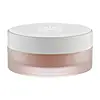What's inside
What's inside
 Key Ingredients
Key Ingredients

 Benefits
Benefits

 Concerns
Concerns

 Ingredients Side-by-side
Ingredients Side-by-side

Ricinus Communis Seed Oil
MaskingDiisostearoyl Polyglyceryl-3 Dimer Dilinoleate
EmollientCera Alba
EmollientTheobroma Cacao Seed Butter
EmollientEthylhexyl Palmitate
EmollientLanolin
EmollientButyrospermum Parkii Butter
Skin ConditioningPrunus Armeniaca Kernel Oil
MaskingPrunus Domestica Fruit Extract
MoisturisingMenthyl PCA
HumectantHelianthus Annuus Seed Oil
EmollientBenzyl Alcohol
PerfumingParfum
MaskingSafflower Oil/Palm Oil Aminopropanediol Esters
Skin ConditioningTribehenin
EmollientCalendula Officinalis Flower Extract
MaskingAscorbyl Tetraisopalmitate
AntioxidantTocopherol
AntioxidantSilica Dimethyl Silylate
EmollientWater
Skin ConditioningDehydroacetic Acid
PreservativePhenoxyethanol
PreservativeSodium Saccharin
MaskingSorbitan Isostearate
EmulsifyingEucalyptus Globulus Leaf Oil
PerfumingMica
Cosmetic ColorantCI 77891
Cosmetic ColorantSodium Hyaluronate
HumectantCI 75470
Cosmetic ColorantPalmitoyl Oligopeptide
CleansingCitronellol
PerfumingBenzyl Salicylate
PerfumingLimonene
PerfumingLinalool
PerfumingRicinus Communis Seed Oil, Diisostearoyl Polyglyceryl-3 Dimer Dilinoleate, Cera Alba, Theobroma Cacao Seed Butter, Ethylhexyl Palmitate, Lanolin, Butyrospermum Parkii Butter, Prunus Armeniaca Kernel Oil, Prunus Domestica Fruit Extract, Menthyl PCA, Helianthus Annuus Seed Oil, Benzyl Alcohol, Parfum, Safflower Oil/Palm Oil Aminopropanediol Esters, Tribehenin, Calendula Officinalis Flower Extract, Ascorbyl Tetraisopalmitate, Tocopherol, Silica Dimethyl Silylate, Water, Dehydroacetic Acid, Phenoxyethanol, Sodium Saccharin, Sorbitan Isostearate, Eucalyptus Globulus Leaf Oil, Mica, CI 77891, Sodium Hyaluronate, CI 75470, Palmitoyl Oligopeptide, Citronellol, Benzyl Salicylate, Limonene, Linalool
Isocetyl Stearoyl Stearate
EmollientSynthetic Wax
AbrasiveHydrogenated Vegetable Oil
EmollientCaprylic/Capric Triglyceride
MaskingCera Microcristallina
Emulsion StabilisingBis-Diglyceryl Polyacyladipate-2
EmollientSucrose Acetate Isobutyrate
Sorbitan Olivate
EmulsifyingTridecyl Trimellitate
EmollientMicrocrystalline Cellulose
AbsorbentPhytosteryl/Octyldodecyl Lauroyl Glutamate
Skin ConditioningStearalkonium Hectorite
Gel FormingCopernicia Cerifera Cera
EmollientStearalkonium Bentonite
Gel FormingEthylhexyl Palmitate
EmollientDecylene Glycol
Skin ConditioningDiethylhexyl Syringylidenemalonate
Skin ProtectingPropylene Carbonate
SolventAroma
Triisostearyl Citrate
EmollientTribehenin
EmollientSorbitan Tristearate
EmulsifyingLecithin
EmollientPentaerythrityl Tetra-Di-T-Butyl Hydroxyhydrocinnamate
AntioxidantAstrocaryum Murumuru Seed Butter
EmollientMoringa Oil/Hydrogenated Moringa Oil Esters
Skin ConditioningPolyhydroxystearic Acid
EmulsifyingSoybean Glycerides
EmollientSorbitan Isostearate
EmulsifyingButyrospermum Parkii Butter Unsaponifiables
Skin ConditioningTocopherol
AntioxidantAscorbyl Palmitate
AntioxidantLactic Acid
BufferingLauric Acid
CleansingPentylene Glycol
Skin ConditioningLauryl Alcohol Diphosphonic Acid
Emulsion StabilisingTrihydroxystearin
Skin ConditioningPalmitoyl Tripeptide-1
Skin ConditioningCitric Acid
BufferingSodium Hyaluronate
HumectantGlucomannan
Skin ConditioningIsocetyl Stearoyl Stearate, Synthetic Wax, Hydrogenated Vegetable Oil, Caprylic/Capric Triglyceride, Cera Microcristallina, Bis-Diglyceryl Polyacyladipate-2, Sucrose Acetate Isobutyrate, Sorbitan Olivate, Tridecyl Trimellitate, Microcrystalline Cellulose, Phytosteryl/Octyldodecyl Lauroyl Glutamate, Stearalkonium Hectorite, Copernicia Cerifera Cera, Stearalkonium Bentonite, Ethylhexyl Palmitate, Decylene Glycol, Diethylhexyl Syringylidenemalonate, Propylene Carbonate, Aroma, Triisostearyl Citrate, Tribehenin, Sorbitan Tristearate, Lecithin, Pentaerythrityl Tetra-Di-T-Butyl Hydroxyhydrocinnamate, Astrocaryum Murumuru Seed Butter, Moringa Oil/Hydrogenated Moringa Oil Esters, Polyhydroxystearic Acid, Soybean Glycerides, Sorbitan Isostearate, Butyrospermum Parkii Butter Unsaponifiables, Tocopherol, Ascorbyl Palmitate, Lactic Acid, Lauric Acid, Pentylene Glycol, Lauryl Alcohol Diphosphonic Acid, Trihydroxystearin, Palmitoyl Tripeptide-1, Citric Acid, Sodium Hyaluronate, Glucomannan
Ingredients Explained
These ingredients are found in both products.
Ingredients higher up in an ingredient list are typically present in a larger amount.
Ethylhexyl Palmitate, also known as octyl palmitate, is created from 2-ethylhexyl alcohol and palmitic acid. It is a fatty acid ester.
The fatty acid content of Ethylhexyl Palmitate makes it an emollient. Emollients help soften and hydrate your skin by trapping moisture within.
Ethylhexyl Palmitate is also used to help improve the texture of cosmetics. It helps other ingredient dissolve in products and help disperse ingredients more evenly.
You'll likely find this ingredient in sunscreen, as it is often used to mix UV-blocking ingredients such as avobenzone and ethylhexyl triazone.
It can also help stabilize the fragrances in a product as a fragrance fixative.
Ethylhexyl Palmitate can be used to substitute mineral oil.
Due to its high fatty acid content, it may not be fungal-acne safe.
Learn more about Ethylhexyl PalmitateSodium Hyaluronate is hyaluronic acid's salt form. It is commonly derived from the sodium salt of hyaluronic acid.
Like hyaluronic acid, it is great at holding water and acts as a humectant. This makes it a great skin hydrating ingredient.
Sodium Hyaluronate is naturally occurring in our bodies and is mostly found in eye fluid and joints.
These are some other common types of Hyaluronic Acid:
Learn more about Sodium HyaluronateSorbitan Isostearate is an emulsifer and cleaning agent. It is created from isostearic acid and sorbitol.
As an emulsifier, Sorbitan Isostearate prevents oils and water from separating.
Due to its isostearic acid base, it may not be safe for Malassezia or fungal acne.
Learn more about Sorbitan IsostearateTocopherol (also known as Vitamin E) is a common antioxidant used to help protect the skin from free-radicals and strengthen the skin barrier. It's also fat soluble - this means our skin is great at absorbing it.
Vitamin E also helps keep your natural skin lipids healthy. Your lipid skin barrier naturally consists of lipids, ceramides, and fatty acids. Vitamin E offers extra protection for your skin’s lipid barrier, keeping your skin healthy and nourished.
Another benefit is a bit of UV protection. Vitamin E helps reduce the damage caused by UVB rays. (It should not replace your sunscreen). Combining it with Vitamin C can decrease sunburned cells and hyperpigmentation after UV exposure.
You might have noticed Vitamin E + C often paired together. This is because it is great at stabilizing Vitamin C. Using the two together helps increase the effectiveness of both ingredients.
There are often claims that Vitamin E can reduce/prevent scarring, but these claims haven't been confirmed by scientific research.
Learn more about TocopherolTribehenin comes from glycerin and behenic acid.
It is used as an emollient, or moisturizer. Emollients form a thin barrier on skin to prevent moisture from escaping.
This ingredient may not be Malassezia folliculitis, or fungal-acne safe.
Learn more about Tribehenin